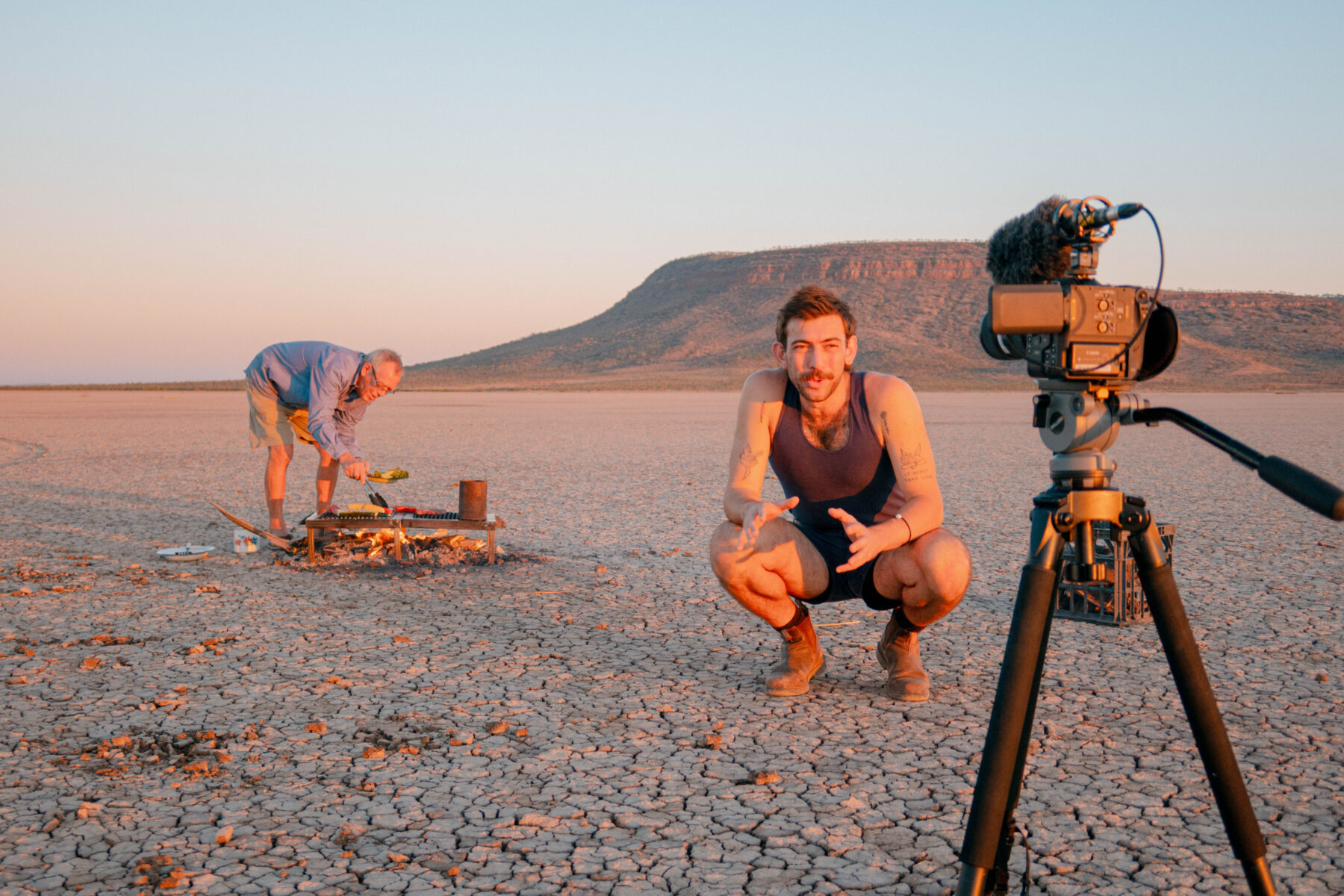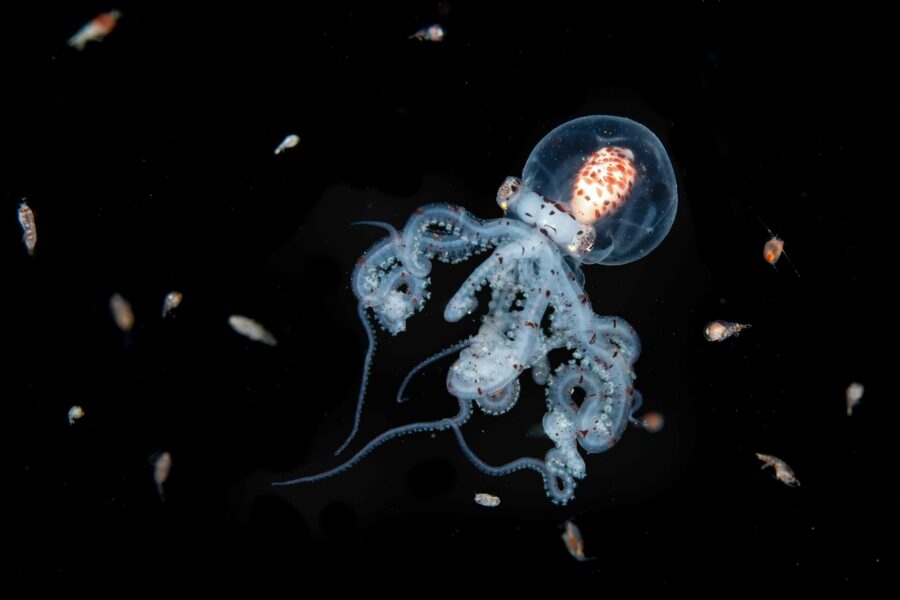On the night of the 2025 Federal Budget, the corridors of Parliament House hummed with the usual suspects – ministers, minders and members of the press gallery. But in one windowless committee room, the line-up looked different. Phones were surrendered, snacks were shared, and a handful of finance ‘content creators’, including Natasha Etschmann, found themselves in the thick of a ritual once reserved for ‘legacy media’.
That ritual was the budget lock-up, a long-standing tradition where journalists are given early access to the budget details under strict embargo conditions – no phones, no internet – until the Treasurer’s speech later that night. For Natasha, better known to her 300,000-plus followers on Instagram and TikTok as TashInvests, it felt a bit like a school excursion. She was there to absorb the information, learn about the process and share it later on her social media platforms and podcast, the Get Rich Slow Club.
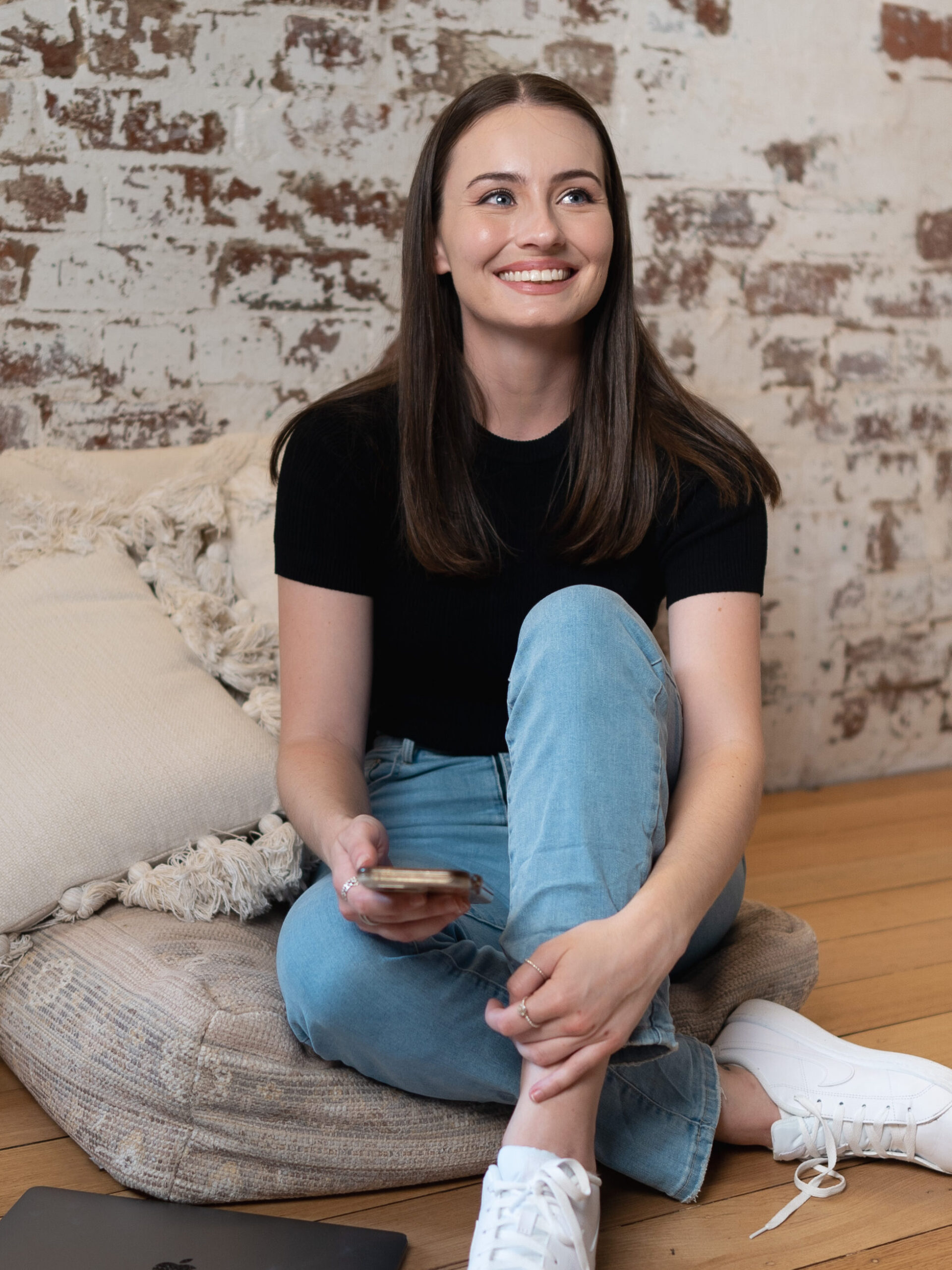
But when she and the 12 other content creators filed into Treasurer Jim Chalmers’ post-budget media briefing, seasoned journos – who until then had been kept in a separate room – turned and stared. By the following morning, the novelty of ‘influencers’ in the lock-up had become a story in itself.
What to call them – content creators, influencers, new media – is itself a loaded question. But that distinction – between the traditional print and broadcast journalists of legacy media with their press passes, and social media voices with their ring lights – goes to the heart of how Australians consume information in 2025.
Some still tune into the budget coverage on the ABC and read the morning wrap in print, but millions of others prefer to watch TikTok explainers and Instagram carousels. Particularly among younger generations, it means the most persuasive voices in Australia aren’t cabinet ministers or newspaper columnists, but rather the individuals who translate mortgage rates into memes or break down climate policy on a reel.
Their reach is intimate. Their tone is conversational. And their influence is undeniable.
A Capital experience
“We felt really welcomed by the Parliament House staff and people involved in organising, but the stares we were getting from other people were noticeable,” Natasha says of the experience in Canberra. “Walking into the media briefing and seeing people filming us was a bit like, ‘Uh… interesting.’ We started getting calls from journalists pretty soon after that.”
The budget lock-up ahead of the 2025 election was a flashpoint that captured how communication is shifting in Australia. By inviting finance content creators into the inner sanctum, the government signalled that the avenues to reaching audiences – more to the point, voters – had changed.
But not everyone has necessarily been on board with the shift, as the next day’s news coverage reflected. “Some of it felt very dismissive – like people were trying to be demeaning and downplay that we were smart people too,” Natasha says. “People love to slap on the word ‘influencer’ instead of saying, ‘Oh, she’s a finance content creator,’ or ‘an occupational therapist,’ or ‘a mental health charity advocate.’ I think they’re just a little bit out of touch with how the world’s working and where young people are today.”
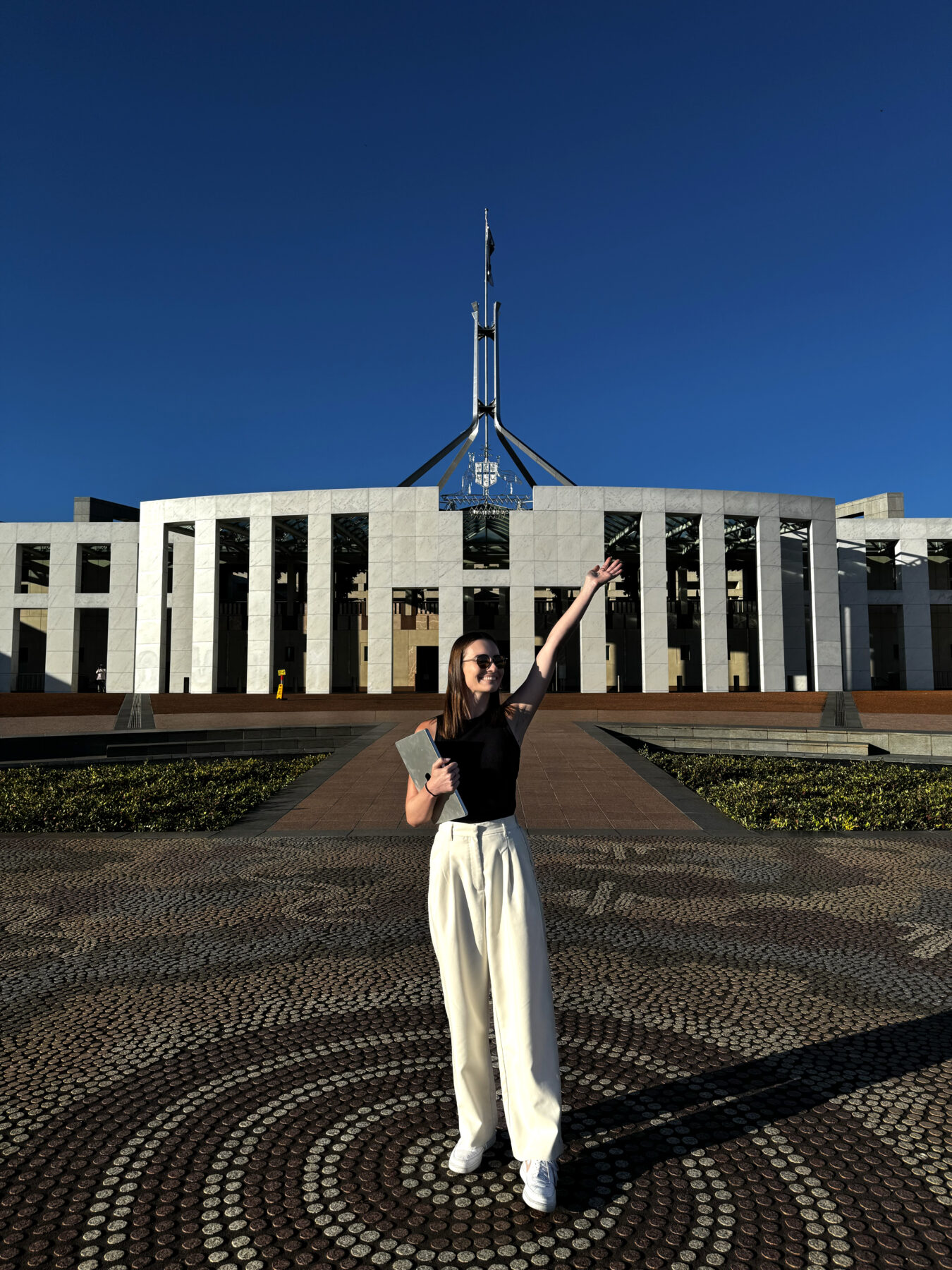

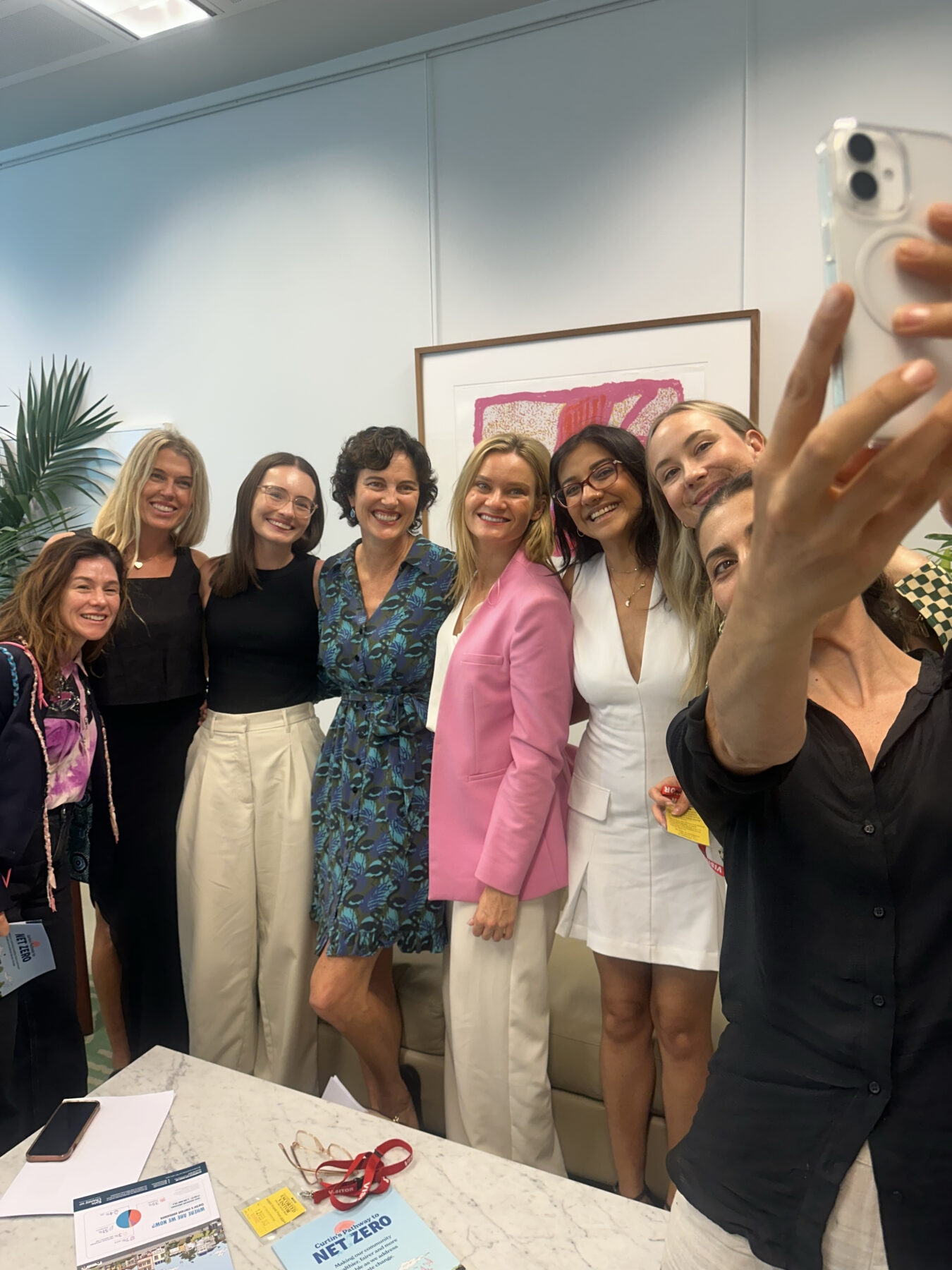
For many, the term ‘influencer’ brings to mind lifestyle figures such as Kylie Jenner or Chiara Ferragni who have built global brands around beauty, fashion and high-end travel, and whose followers number in the tens or even hundreds of millions. But such influence stretches well beyond those realms: to finance, environmentalism, adventure, and almost any niche where a following can be built online. And when you begin to delve into why, two words come up repeatedly: authenticity and trust.
The growth of Natasha’s platform was powered by her willingness to share her own financial journey in real time. At age 22 – it was August 2020, in the thick of COVID – she posted her net worth of $114,000 on Instagram and began to document her investments on the path to surpassing $2 million by 2025. Her transparency gave followers a sense they were learning alongside her.
That authenticity is central to why she’s now one of Australia’s most visible finance voices. Today, Natasha shares not just her personal journey but also the journeys of willing followers. She also offers her takes on major financial news as it breaks in Australia. “I think for many people it’s nice to see someone who’s a bit more relatable. If someone criticises me, I answer their question and engage with them. If someone says, ‘Oh, it seems like you’re lying about this,’ I can explain it,” Natasha says. “I feel like with regular media, you don’t really get to know the journalists behind the story. You don’t know their motivations. You don’t know if they’re being honest with you. It’s harder to trust.”
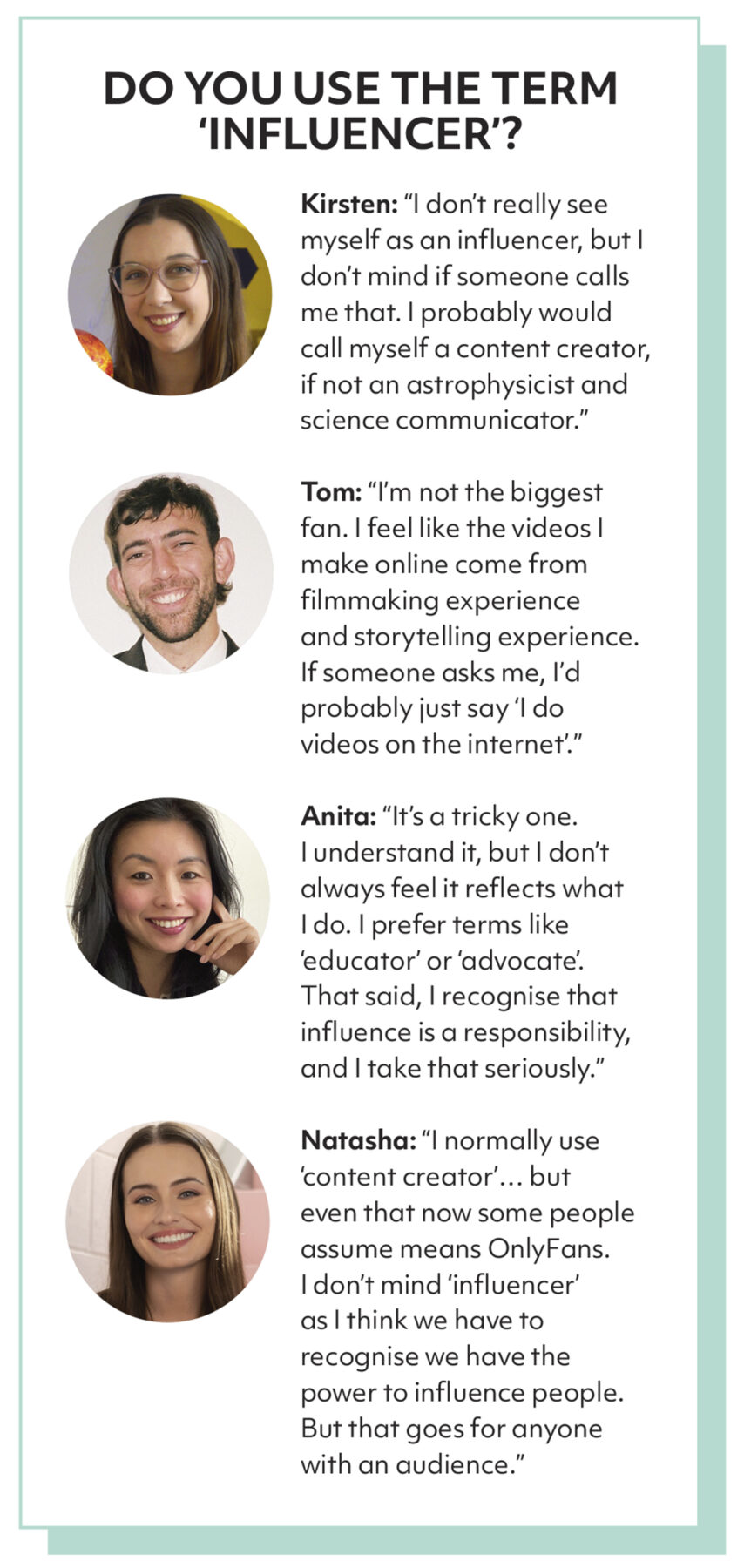
Whether it’s due to trust, or authenticity, or something else altogether, increasingly it’s simply how young people engage. According to a report from market researchers The Behavioural Architects and The Growth Distillery, 73 per cent of Australians aged 15–40 follow at least one influencer, and 87 per cent of those see that influencer’s content nearly every time they log onto their phones. Over half of Australians aged 15–40 say they’ve changed their opinion on an issue because of an influencer.
For these Australians, it’s about seeing how people like them interpret and personalise complex issues. Sometimes that means following Natasha as she breaks down the Budget, or Konrad Benjamin from Punter’s Politics as he translates parliamentary manoeuvring into pub-chat language on Instagram. It could be via podcasts like former reality TV star Abbie Chatfield’s It’s A Lot, which blends politics with pop culture and unapologetic opinion, or YouTube channels like Jordan Shanks’s Friendlyjordies, which mixes comedy with political critique and has built a loyal following of 1.4 million subscribers.
But this influence is a double-edged sword. The same intimacy that builds trust and showcases authenticity also blurs the line between information and persuasion. Regulation lags: for example, there are no clear rules around political advertising on social media in the final days before voting – unlike TV and radio, which are subject to a media blackout from the end of the Wednesday before polling day under the Broadcasting Services Act 1992. The Australian Electoral Commission is attempting to keep pace, updating guidelines around authorisation on paid political content and requiring clearer disclosure of sponsored material. But the rules remain patchy, and plenty can slip through the cracks. Worse still, accounts peddling misinformation can spread quickly, powered by algorithms that don’t necessarily prioritise truth.
For Natasha, who is licensed to give financial advice, it’s about striking the right balance. “It’s an interesting challenge trying to post things that are digestible but also cover everything you might need to know about a certain situation or product,” she says. “If I’m getting a lot of negative comments, I’ll sit back and be like, ‘Okay, is this on me? Or is this just a bit of a spicy point that people aren’t ready for yet?’ But I think this is a discussion for literally everyone, not just content creators.
“But I also get lots of positive messages every day. People saying, ‘You’re the reason I started investing.’ People who’ve gotten divorced saying they felt like they were empowered to stand up for themselves and fight for the things they deserved. Lots of people saying they bought their first house, which is very exciting. People being like, ‘Wow, I didn’t realise this was for me, but now I’ve invested, and I’ve got like 50 grand.’”
As the space continues to evolve, it’s unlikely Natasha and co are the last members of this new crop of media to step inside the halls of Parliament. Meanwhile, beyond Canberra, these same dynamics are playing out in other areas – from adventure to science and environmentalism.
Outback influence
In Kununurra, about 30km from the Western Australia–Northern Territory border, Tom Forrest and his grandad are gathered around a campfire grill built on red dirt. Spinifex rustles gently in the breeze behind them as they toss dough and stoke flames. For them it’s an ordinary afternoon ritual, but one that will soon reach audiences well beyond the Kimberley.
Where once glossy brochures and tourism board commercials had the job of selling Australia, today it’s ordinary people with cameras in hand shaping how our country is seen. In 2023, Tourism Australia spent up to $90,000 hosting three international influencers – Chris Olsen, Maddie Grace Jepson and Francis Bourgeois – covering their flights, accommodation and expenses in New South Wales. Olsen’s clips alone garnered tens of millions of views.
But outside of marketing budgets and international names, some of the most compelling storytelling comes from individuals whose work grows organically out of place and passion. Take Tom, better known as Outback Tom on Instagram and TikTok. Those bush-cooking clips with his grandfather evolved into a platform that now draws hundreds of thousands of viewers and tells stories about life in regional Australia: not just campfire cooking but waterfalls, station work and community. In the process, he has become one of the Kimberley’s most effective ambassadors.

“Me and my grandad, we were just at our property one day and I said, ‘Do you want to go out the back and we’ll do a cooking video?’ You know, just cook something on the fire, like we’ve always done growing up, but make a funny video about it,” Tom says.
“The first video we did, which was a two-ingredient naan bread recipe, got almost a million views. It showed us what is possible – that if we continue to highlight living in outback Australia, living in the Kimberley, that relationship between me and grandfather – what could come from it. But it wasn’t a search for notoriety or financial gain or anything like that. It was just wanting to tell good stories and share parts of our life out here.”
Those stories give regional communities something advertising dollars often can’t: visibility grounded in authenticity. For the Kimberley, and for other remote parts of the country, it means new audiences discover what makes these places tick. “People sometimes don’t realise what we have in our backyard. I think it’s really important to showcase that and put some work into protecting it,” Tom says. “When I’m out and about, people just come up to me – you know, leaving the pub on a Saturday night, and some old bloke’s yelling at me, ‘You’re putting East Kimberley on the map!’ Or someone on the train tells me, ‘I love the stuff you’re doing in the mob space,’ going out to Indigenous communities and telling their stories. But it’s really just about being honest in the videos we make.”
Of course, with that honesty comes ethical dilemmas associated with earning an income. Brand partnerships are inevitable for influencers who turn their platforms into full-time work, but the line between authentic storytelling and commercialisation is thin.
“The moment you start looking into making social media and online storytelling a full-time job, it’s almost guaranteed you have to partner with a brand at some point,” Tom says. “When it works, it’s great. You both walk away happy. The brand gets a great video, and the creator is happy they’ve gotten their pay for the fortnight and they’re able to go and make more videos, or buy more camera gear, or do more Kimberley trips.”
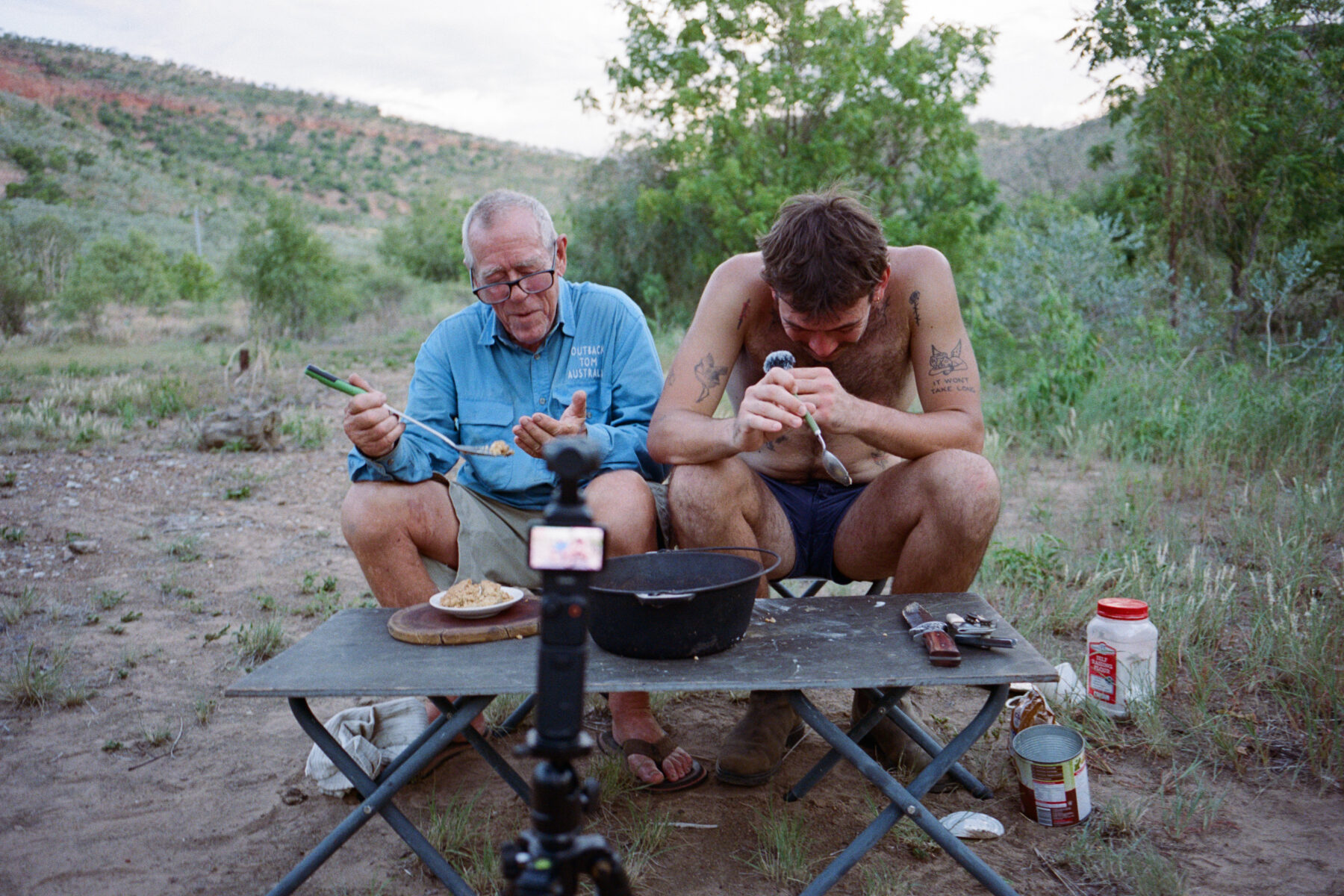
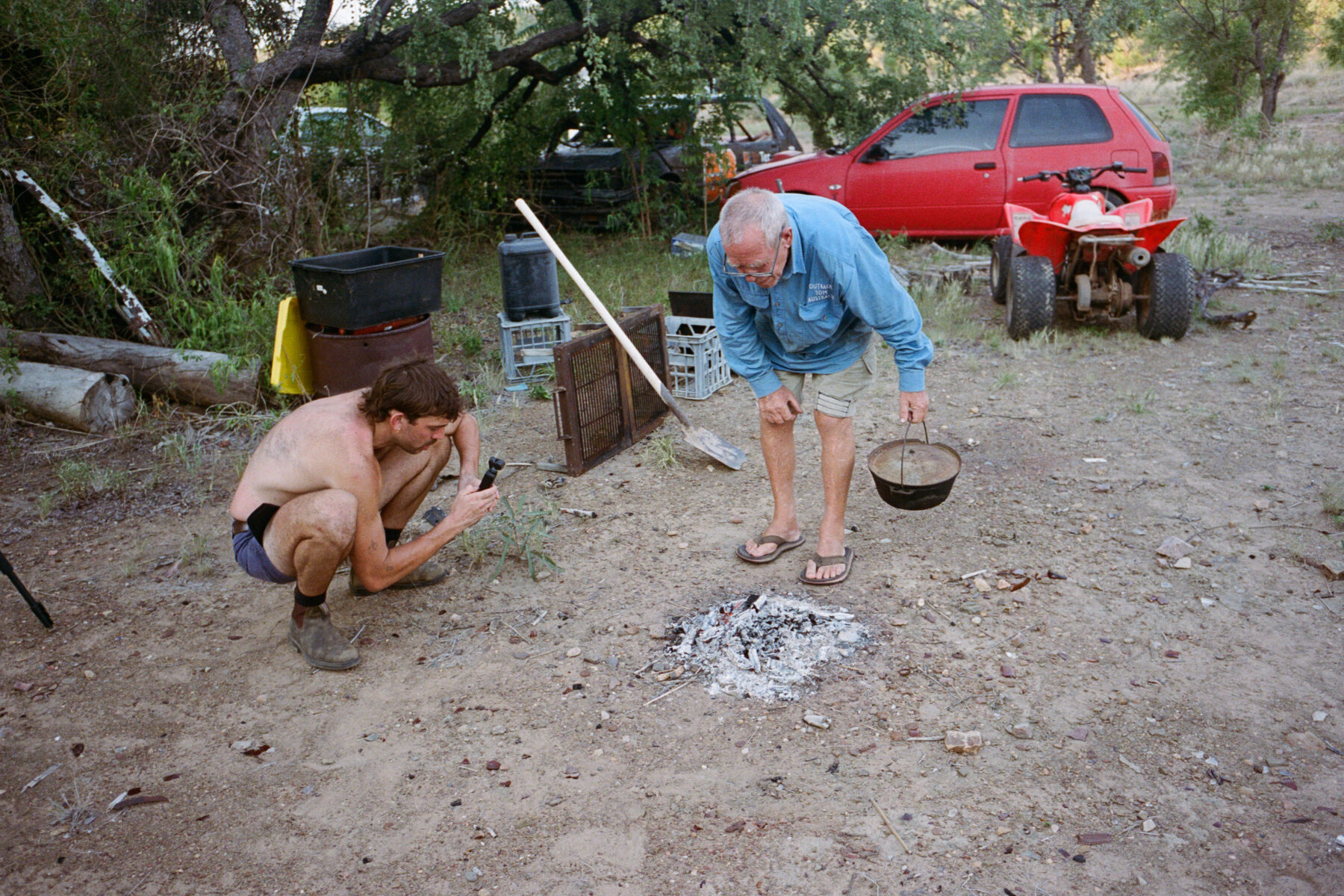

At the same time, there’s no shortage of brands who want access to the platform – in Tom’s case, more than 500,000 followers across TikTok and Instagram – whether alignment exists or not. “I’ve turned down countless brand partnerships because there’s just no way we can make Outback Tom and their brands align. They’re too different,” he says.
And that discernment matters. When authenticity is currency, opportunistic partnerships can undo years of trust in a single post. “Influencers need to carefully navigate the imagined boundary between being ‘authentic’ and ‘selling out’,” writes communications scholar Emily Hund in her book The Influencer Industry: The Quest for Authenticity on Social Media. That means, she continues, always “calibrating the frequency with which they post sponsored content, as well as partnering with the ‘right’ brands”.
For Tom, though, it simply boils down to sharing regional Australia with people who wouldn’t see it otherwise. “Outback Australia is a special place. You’ll never find a community stronger than what we have out here,” he says. “Through my videos, I just hope people see it with a glow in their eyes. And on their next holiday, maybe they come out to the Kimberley during wet season. Maybe go and become a ringer or a jillaroo for six months and learn how to master horses. Maybe learn about life on a cattle station. It can actually be life changing.”
Professional enthusiasm
Long before Instagram reels, scientists who wanted to reach the public relied on books and occasional media appearances. Outside lecture theatres or peer-reviewed journals, their own voices tended to be lost. But the rise of digital platforms changed that equation. Today, scientists who embrace the role of communicator – with their faces and professional credentials front and centre – can build direct relationships with audiences that were once out of reach.
In Australia, one of the clearest examples of a scientist using her platform to promote a pure love of science is Dr Kirsten Banks, better known online as Astrokirsten. An astrophysicist, science lecturer and former Sydney Observatory tour guide, Kirsten has built a following of more than 700,000 by mixing her professional expertise with a contagious sense of enthusiasm and fun. In the space of a fortnight, she might share reels about why stars twinkle, why peacocks have lasers, and the process of ‘spaghettification’ – which is what happens to your body if you get too close to a black hole.
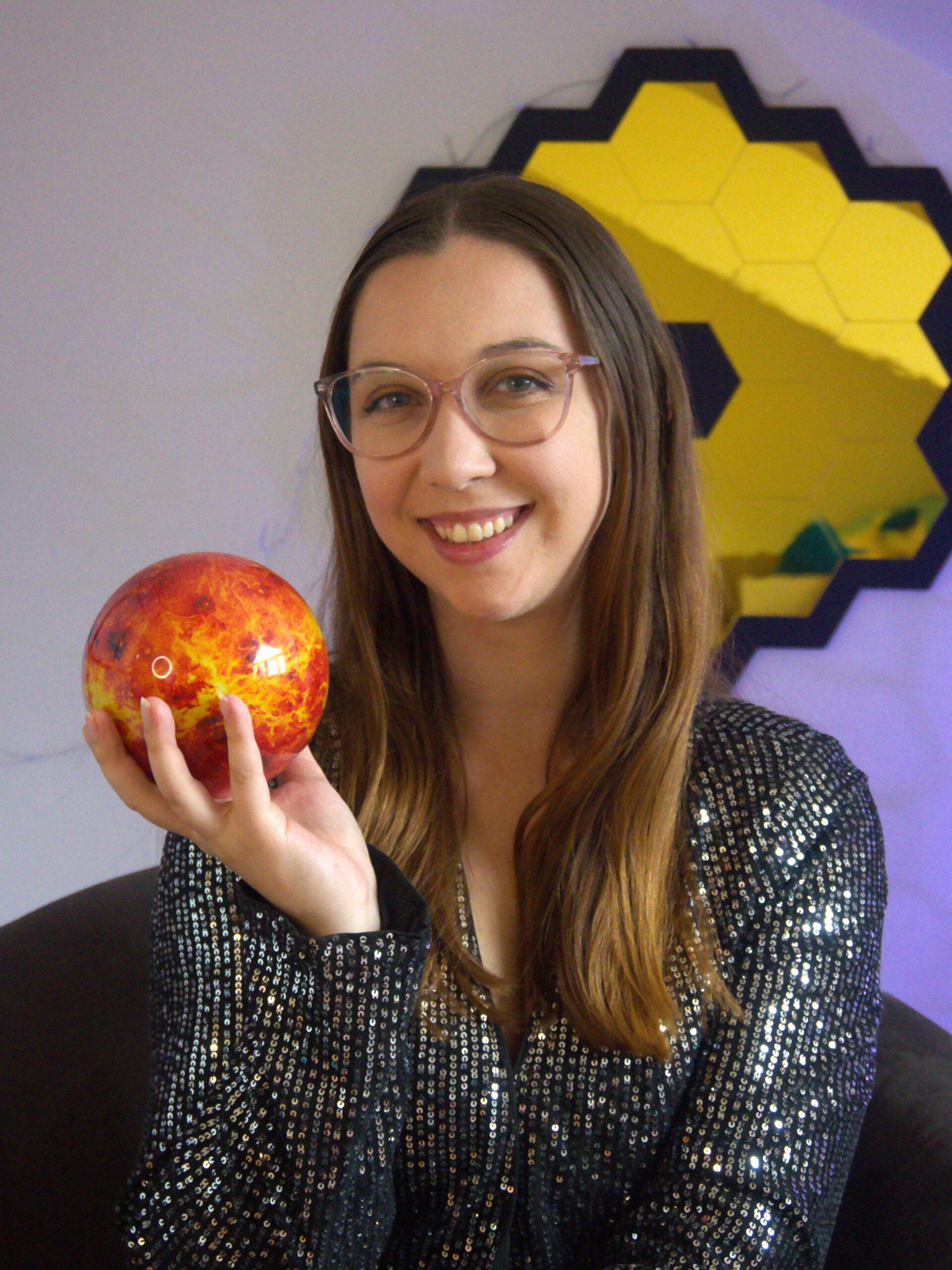
“I just instinctively laugh when people say science is supposed to be serious because for me science is all about curiosity, and curiosity is inherently a fun thing,” she says. “I mean, there’s definitely that vibe of the ivory tower of science and academia, and we’re of course trying to figure out really important things about the universe. But sometimes it’s also fun to just learn about zombie stars or why black holes burp.
“Every scientist I talk to gets a little bit giddy when they talk about their science and the things they’re learning. We’re all just curious little beings trying to figure out the world. It doesn’t have to be all numbers and data and observations. It can be human stories too, because humans do science.”
By showing that human side, she hopes other young people will follow her into that world – or that universe, as the case may be. “I was doing a panel on science communication and a student came up to me and said, ‘Hey, I saw you and your content explaining a new space science discovery, and the way you talked about it made me want to change my major to include more science.’ And that’s such an honour to be told. You were inspired to do that because of me? That’s huge. I don’t take that lightly.”
Still, obstacles remain for many scientists looking to step into the space. Anti-intellectualism and misinformation run deep online, particularly when you move beyond relatively non-contentious topics such as peacock lasers and into areas such as climate change or vaccines. For every scientist who gains traction on TikTok, there are audiences inclined to dismiss them. Those voices can be amplified by algorithms that reward outrage and confirmation bias over nuance or expertise, all in the name of increasing engagement.

For viewers, being able to separate fact from fiction becomes critical. According to the annual Australian Digital News Report in 2024, concern about misinformation among Australians rose from 64 per cent to 75 per cent from 2022 to 2024. That number will likely only increase as artificial-intelligence (AI) technology develops. For science communicators in general, it’s all part of the challenge: how to retain trust in an environment where misinformation circulates quickly and loudly.
Nonetheless, Kirsten wants to see more scientists join the mix. “I feel like the benefit of having more of us share – even if we’re talking about the same thing, even if the information doesn’t change – is great,” she says. “I don’t expect everyone to resonate with my video about, say, why the sun is a certain colour. But if someone else makes a video explaining that in their own way, sharing their personality and sharing their perspective, maybe that person who didn’t resonate with mine will resonate with theirs. And that is a net benefit to all of our understanding.”
In the realms of sustainability and environmentalism, it’s perhaps where influencer platforms have the most room for growth, but it’s also where they face their toughest challenges.
Approachable influence
While Kirsten helps demystify the cosmos, figures such as Anita Vandyke make the idea of living sustainably feel equally approachable. A self-described ‘accidental influencer’, Anita began to document her journey towards a lower-waste lifestyle in 2015 as a way to keep herself accountable.
“I was an aerospace engineer studying medicine and feeling the disconnect between the fast-paced world I was in and the slower, more intentional life I craved,” Anita says. “I had no idea it would resonate with so many people. I was just one woman trying to reduce her waste and live more mindfully.”
Anita’s posts are about showing the messy, real process of reducing waste and making conscious choices. Followers see a parent juggling study, work and family while also trying to tread more lightly on the planet. It’s a model that feels replicable for everyday people. “I’m a firm believer in progress over perfection,” Anita says. “I think there’s power in being vulnerable, in saying, ‘I’m still figuring this out,’ because that’s the truth for all of us. Sustainability has to be sustainable for you.”
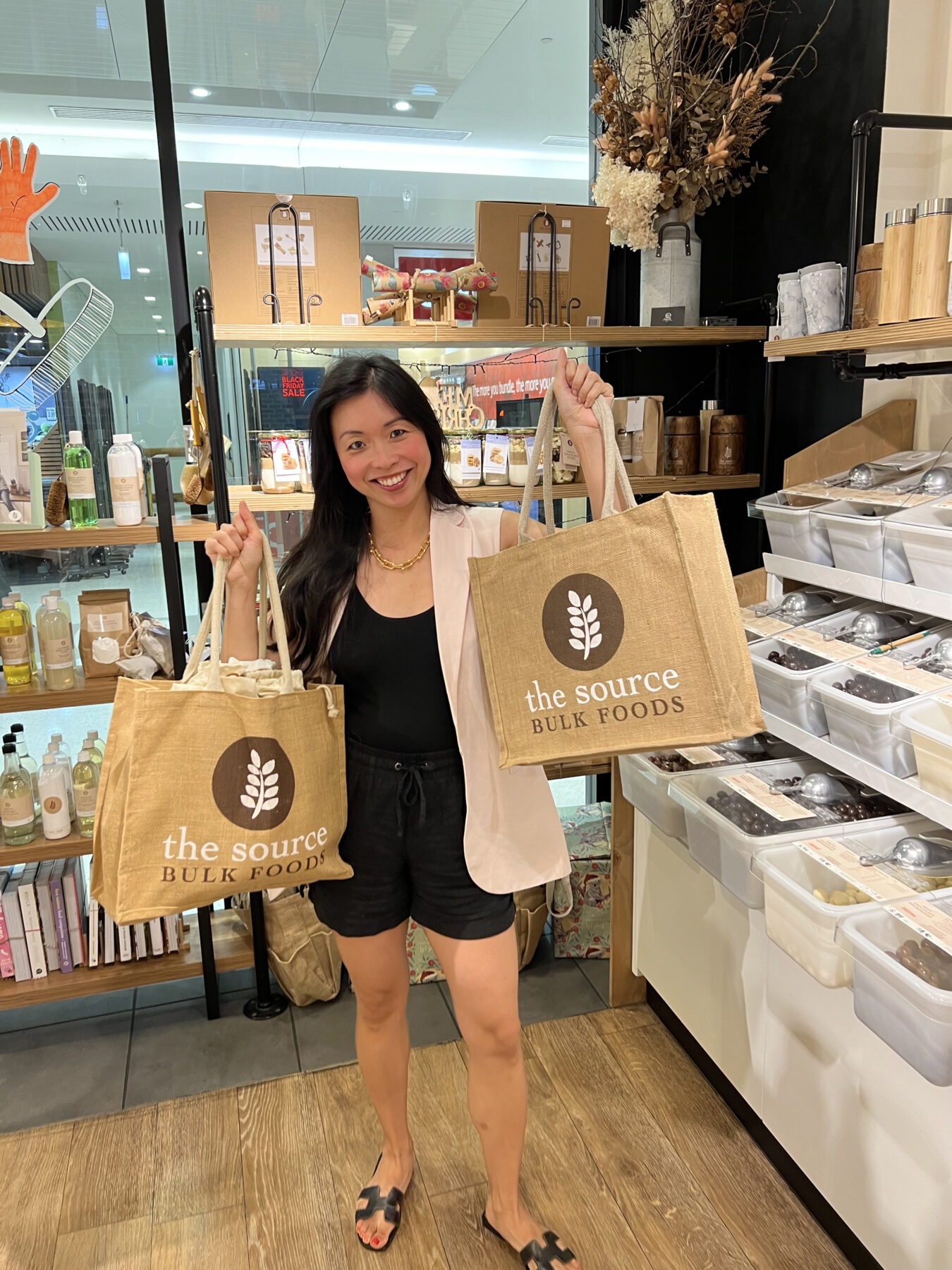
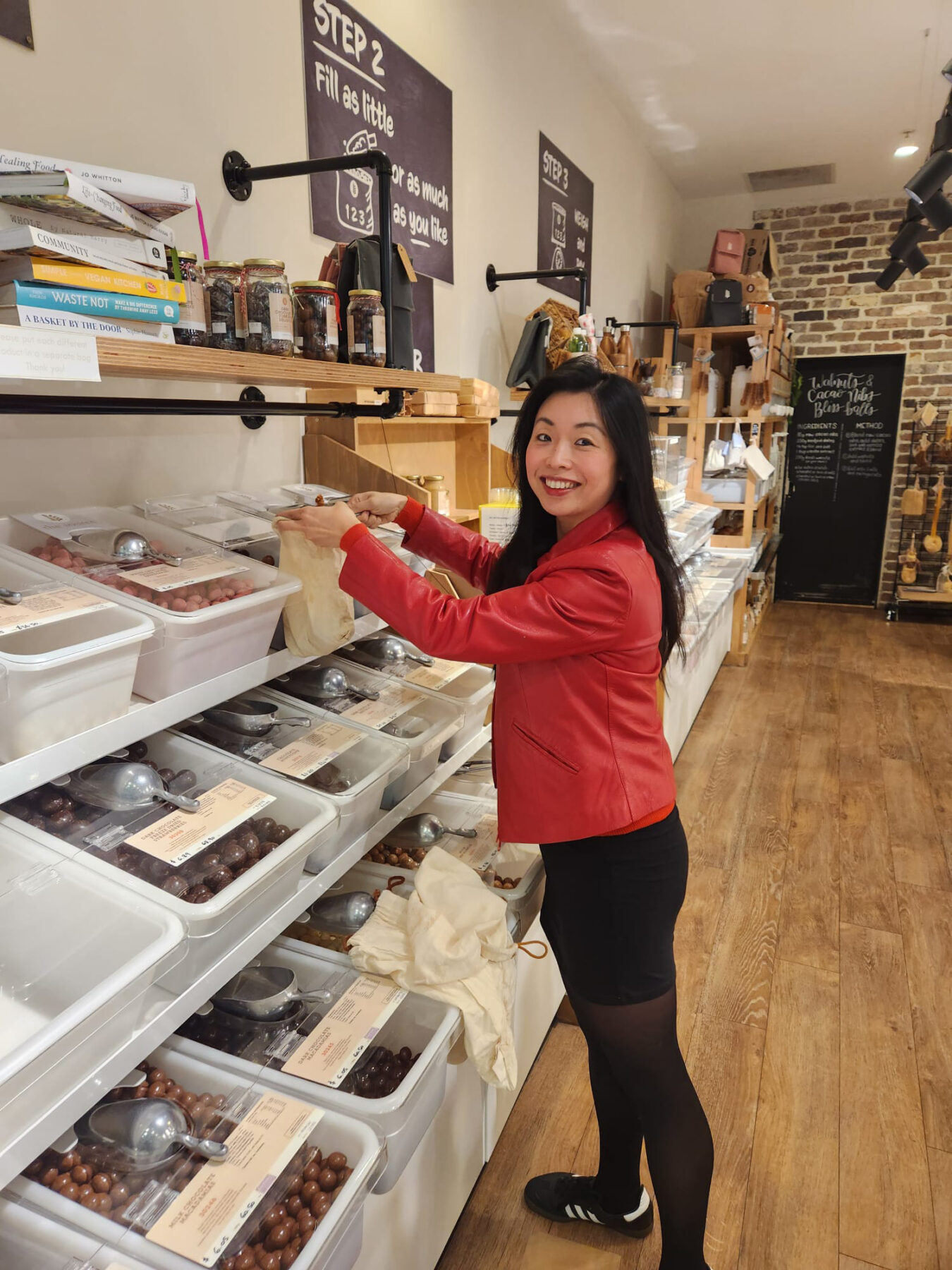
In Australia, this kind of storytelling can be especially resonant. For many, sustainability stops being an abstract policy conversation during moments like the Black Summer bushfires, when climate change feels immediate. Anita says that period of 2019–20 crystallised her own commitment to sharing online. “I remember holding my newborn and looking out at the smoke-choked sky thinking this is the future we’re handing over unless we act. I think the collective grief really united the sustainability community,” she says.
By grounding her storytelling in personal experience, Anita has built a platform of more than 75,000 followers on Instagram. Elsewhere on social media, Toby Davidson, aka Toby the Wombat Guy, documents his work treating wombats with mange to a following of 90,000, and marine biologist Laura Wells shares ocean science and advocacy to almost 77,000. They might not be Jenner and Ferragni numbers, but Anita believes the impact is still significant.
“A few years ago, I posted about doing a ‘buy-nothing month’ – not purchasing any new clothes, books or homewares unless absolutely necessary. The response was overwhelming. So many people messaged me saying they felt empowered to pause their own consumption habits, even just for a month. What stuck with me was someone who said, ‘This challenge made me realise I already have enough.’ That’s the kind of mindset shift that ripples.”
Generational change
It’s one thing to use social media to shift habits in the home, but it’s another to galvanise a generation into collective action. For today’s activists, however, that’s precisely the challenge. Gone are the days when handing out pamphlets on the thoroughfare was your best path to disseminating information; today’s youth-led movements begin online. A post might spark curiosity, a reel might explain a policy, a share might spread that information to dozens of peers in seconds. But the real test is whether those moments online translate into tangible action.
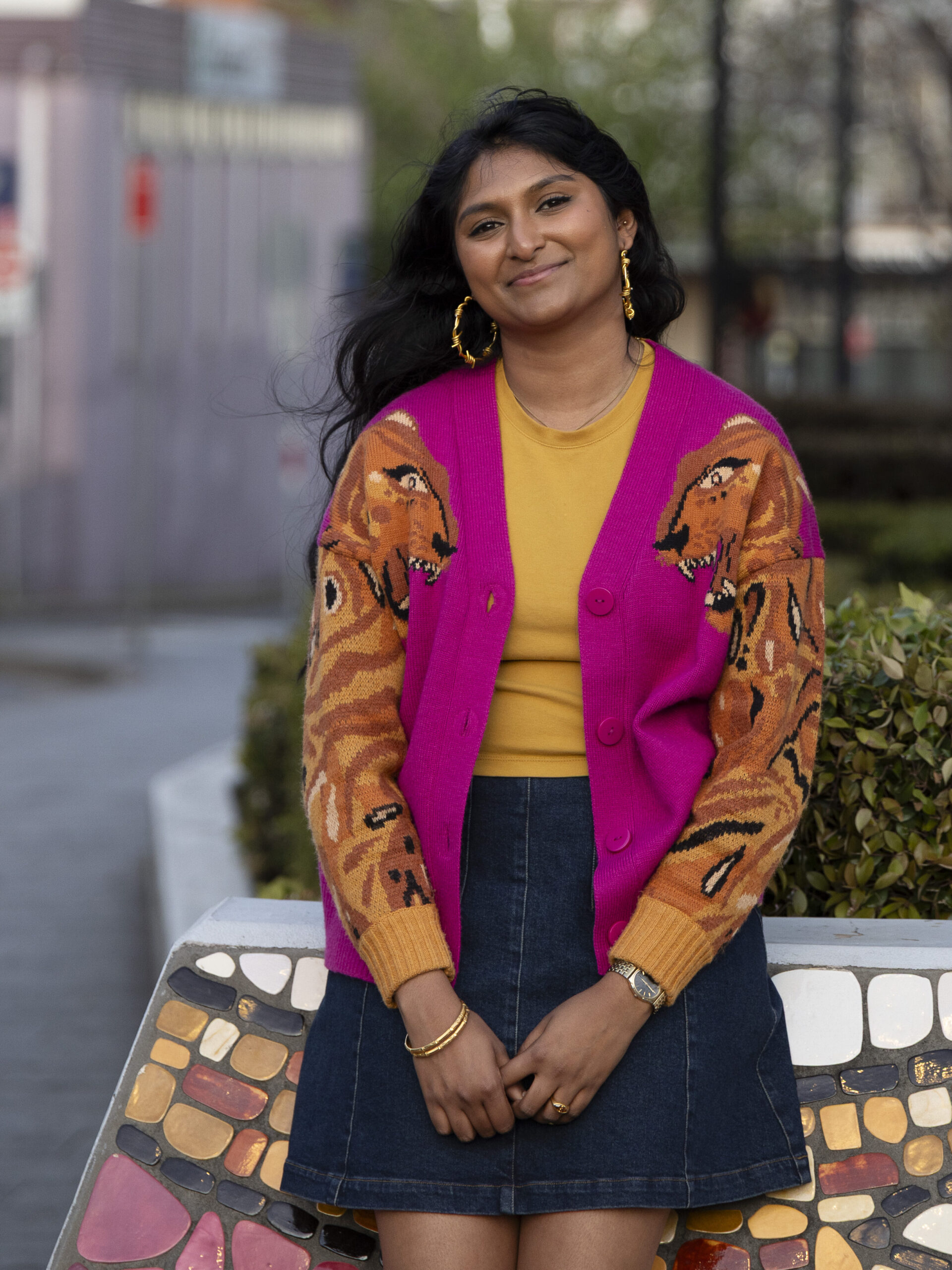
Anyone scrolling through their social media apps can feel overwhelmed by the scale of world crises and the flood of information, caught between alarmism and apathy. The phenomenon even has a name: ‘doomscrolling’, which was a Macquarie Dictionary 2020 Word of the Year and refers to the practice of continuing to read newsfeeds online or on socials, despite the fact that the news is predominantly negative and often upsetting.
Grace Vegesana, National Director of the Australian Youth Climate Coalition (AYCC), says climate activism for the youth of today is very much about building a bridge between digital engagement and real-world organising. It’s about harnessing that youth energy and taking someone from ‘liking’ a story online to actually sitting in a room together, learning, planning, and stepping into leadership roles.
“From the dawn of time, young people have always been sharing what they’ve been up to on platforms for social change. Whether it’s letters to the editor or posting on your TikTok, young people have always found ways to share their stories,” Grace says. “For us, our focus is on young people who want to take action but maybe don’t know how to. On hiking curiosity for young people who care about the climate crisis and converting them to understanding the key issues that drive it, that they can take action on, that they can share on to their friends to build collective literacy – as opposed to trying to change everybody’s mind. Because you actually just can’t.”
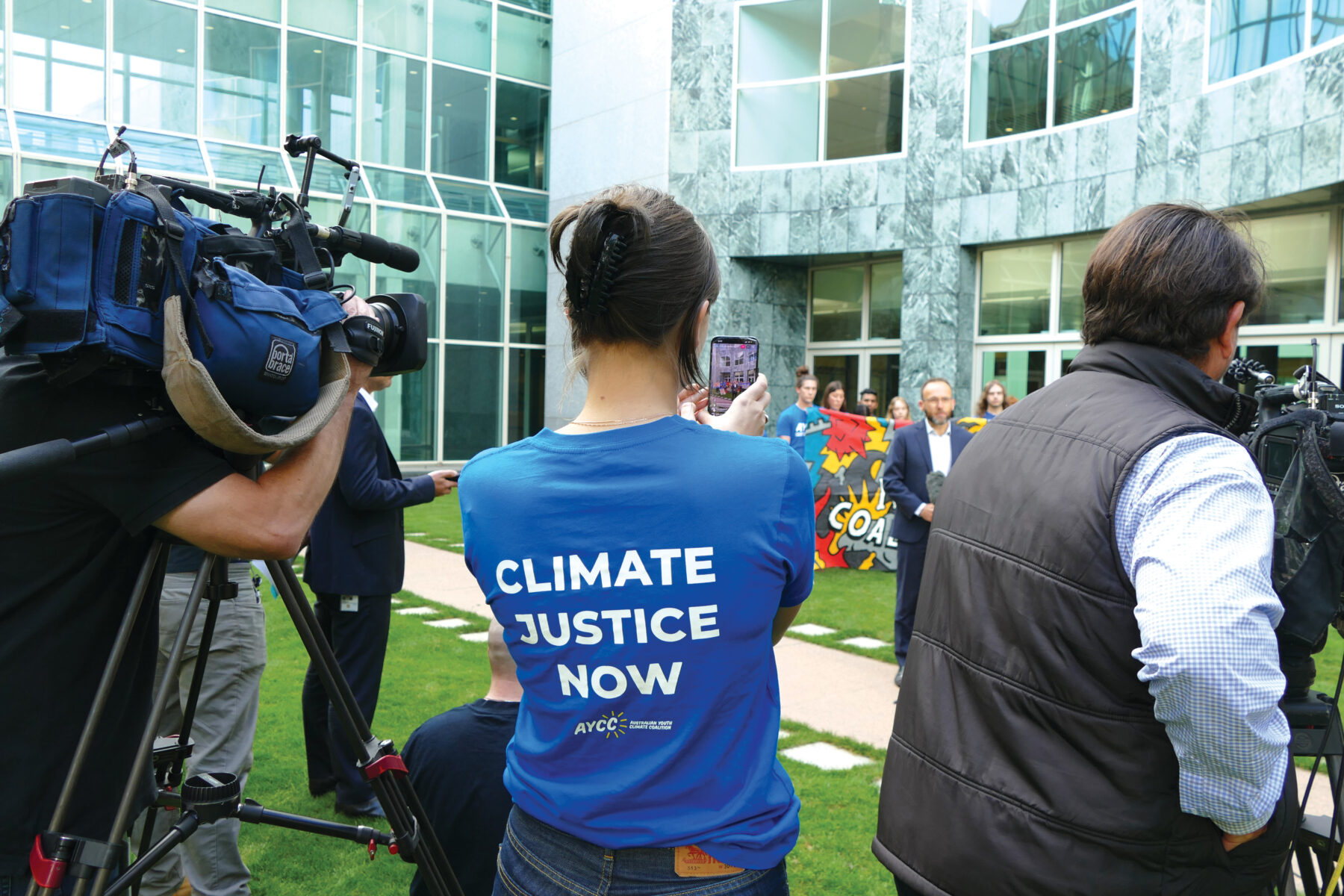
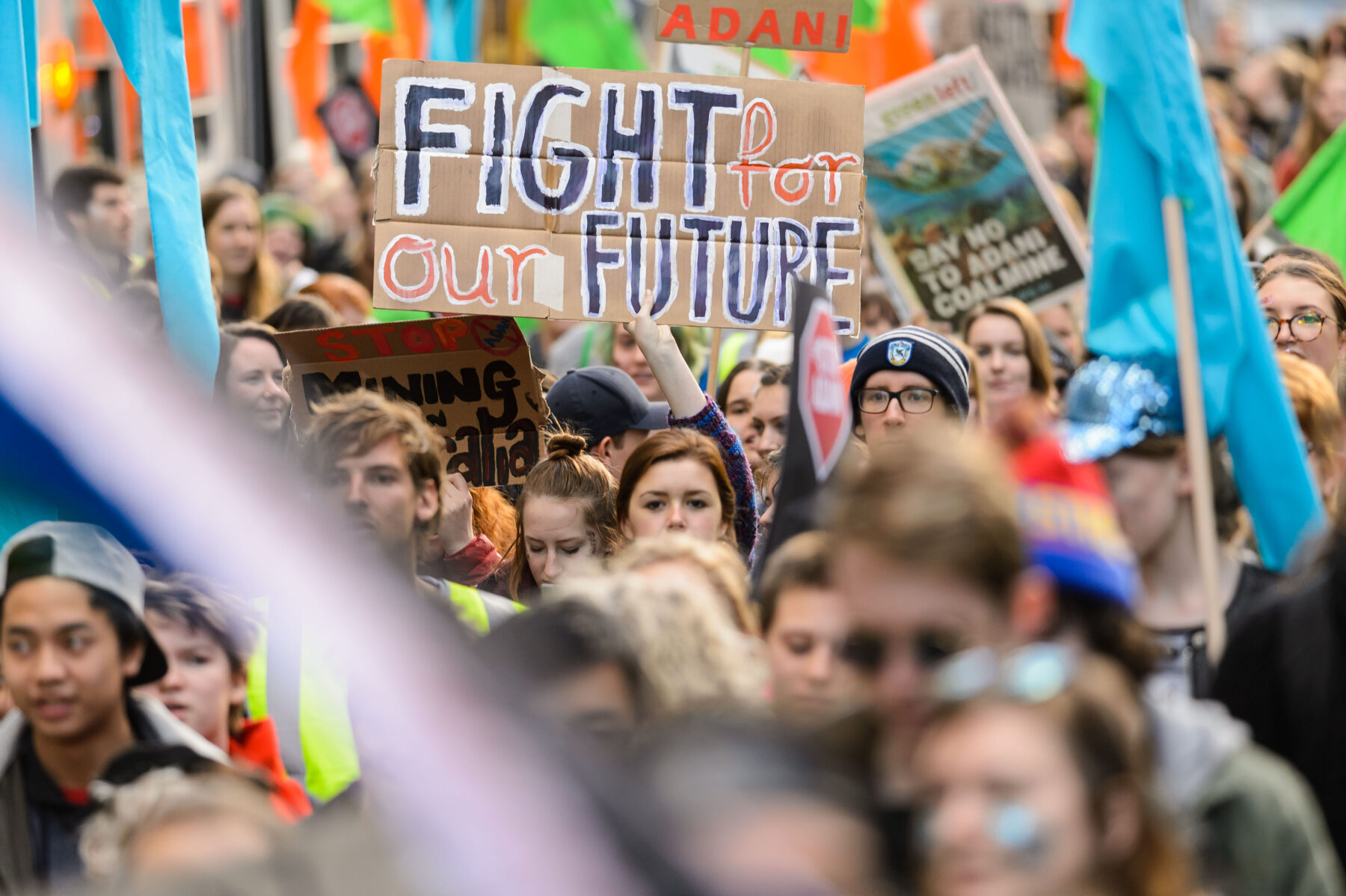
In the lead-up to the 2025 Federal Election, AYCC combined a social media campaign with on-the-ground presence in dozens of electorates. The social media portion focused on unpacking concepts such as preferential voting and understanding where various parties stood on climate justice issues. The AYCC’s effort was part of a wider movement that resulted in a record-breaking youth turnout, with a youth enrolment rate (electors aged 18–24) of 92 per cent, up from 89.8 per cent in 2022 and 86.7 per cent in 2016.
“So, for example, [we looked] at preferential voting in pop culture terms – like whether Nicki Minaj would beat Beyonce in the polls depending on preferential voting flows; making sure we’re not taking it too seriously. If you’re a youth organisation or a young person who is trying to create content for young people, you need to keep it fun if you want to be in this for the long haul. You need that levity and the silliness that youth movements can bring to a space,” Grace says.
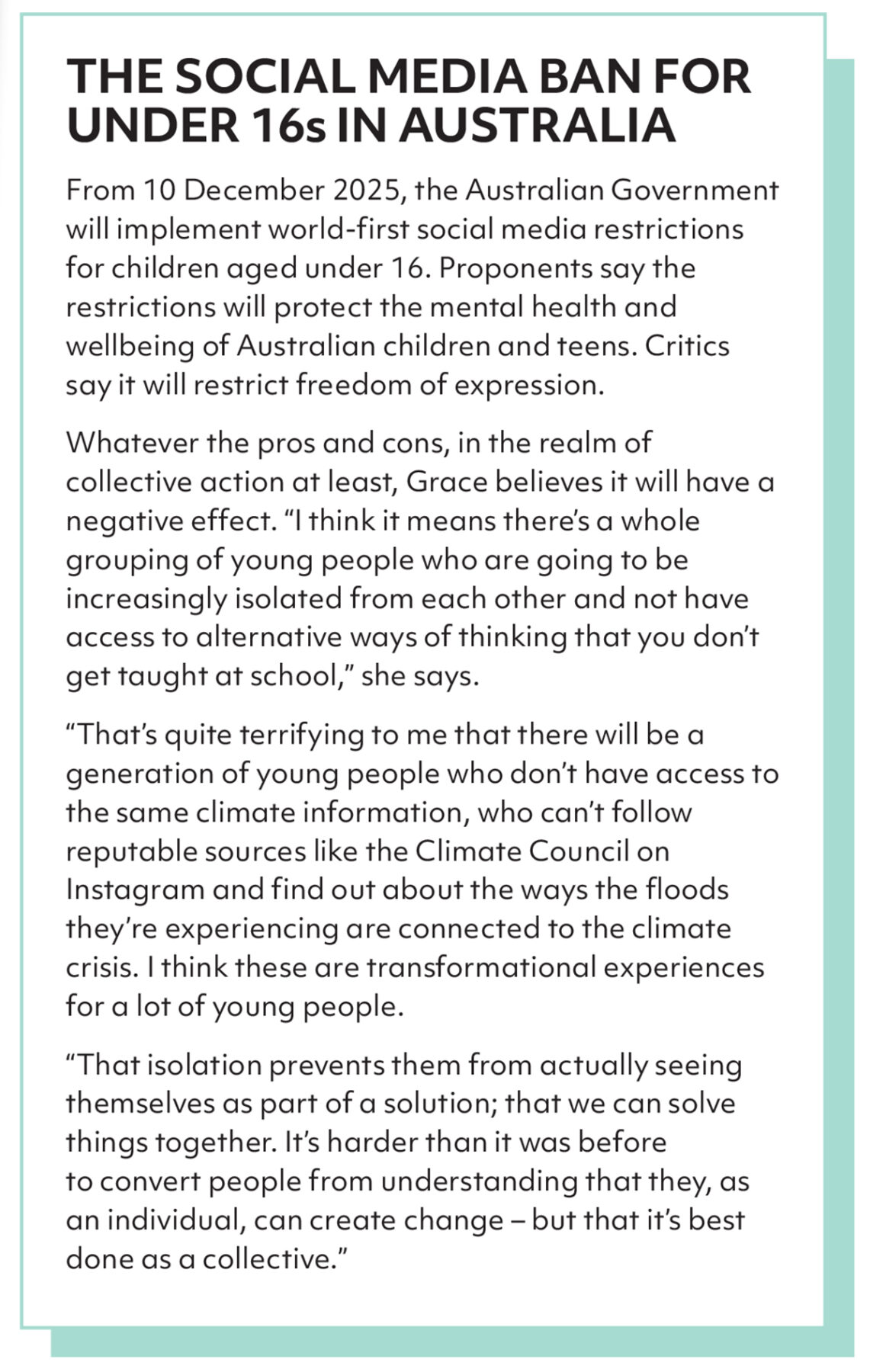
The thing that works, she adds, is not perfection but – that word again – authenticity. It’s about showing that activism can be messy, joyful and diverse, and that – echoing Kirsten and Anita – every contribution counts. “What makes social movements so rich is the ecosystem of people that can be involved in whatever way that looks right for them. There’s a role for every single person,” Grace says. “You just have to stay true to yourself, and your cause, and your values. That’s the most important part of creating change: being true to what you’re trying to fight for.”
At the same time, AYCC works to make offline action just as accessible as online. That might mean introductory workshops like Climate Justice 101, or sessions on campaigning, conversations and leadership. AYCC events often end with collaborative planning – sometimes even just grabbing a set of markers and some butcher’s paper, and mapping out a vision of the world – to help turn ideas into strategies. Whatever the method, their message is consistent: you don’t have to face it alone.
“I think, online, you have this manufactured sense of community because the algorithm is showing you the content of like-minded people,” Grace says. “But actually getting in the same room as other young people is so special because you get to talk and explore your differences, your similarities, how your theories of change work in the world. What your visions are together. And what the world you want to build is.”
